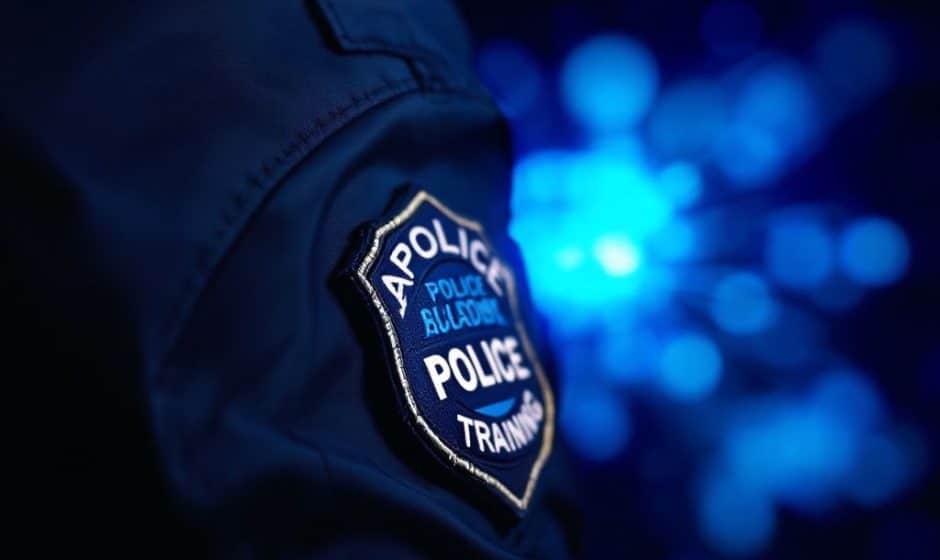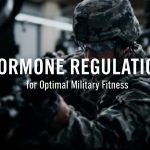Ever catch yourself wondering how officers maintain their cool in high-pressure situations while executing perfect discipline and decision-making skills? It’s not just about being tough or having a sharp mind—though those are essential traits. The secret lies in one crucial aspect: efficient **hormone regulation**. It’s like their internal GPS for managing stress, maintaining focus, and tapping into high levels of endurance.
Let’s dive into the whole training process, taking cues from those devoted to making it through Police Academy Training. There are a few eyebrow-raising parts along this journey, especially when you bring lue seamlessly wit into the mix. We’ll unpack it all, helping you blend into the blue seamlessly with the right mindset, physique, and most importantly, knowing how to keep those hormones working with you, not against you.
Understanding Police Academy Training Dynamics
Before you get your head wrapped around managing hormone regulation, a solid understanding of the academy’s training flow keeps you in good stead. It’s not just boot camp with a badge! This is where **police fitness** meets mental grit, and teamwork is as vital as individual prowess.
The Journey of Police Academy: What’s in Store?
Deciding to enroll in Police Academy Training is like taking the first step toward a high-stakes adventure. It’s rigorous but rewarding, designed to equip you with critical skills needed to become an effective police officer. Here’s what typically lies ahead in this journey:
1. Physical Conditioning
Oh, the workouts! From endurance runs to strength exercises, police fitness is no joke. It’s about building a body that can handle whatever’s thrown at it—literally and figuratively.
2. Mental and Emotional Fortitude

The real test though? Keeping your cool and mental sharpness when everything else is trying to push you off balance. Police work demands unshakeable emotional resilience, a seamless transition which many new recruits often find challenging.
3. Legal and Ethical Training
Understanding the law inside and out is crucial. You’re not only enforcing it; you’re living it.
4. Weaponry and Self-Defense Mastery
Safety first, folks! Knowing how to operate firearms can save lives, and mastering self-defense concepts gives you the upper hand in sticky situations.
5. Strategy Yielding and Communication
Beyond physical prowess, effective communication and strategic thinking set the foundation for a successful policing career.
Riding the Hormonal Wave in Police Academy Training
Here’s the crux: Your body, when put under stress—mental or physical—releases hormones. These biological chemicals play an essential role in how you handle intense situations, sustain physical fitness, and stay composed on the job. Seriously, consider hormone regulation your not-so-secret weapon.
Key Players in Hormone Regulation
Let’s outline some hormones that your new routine, from those killer push-up sessions to cramming for a law exam, is tossing into the mix:

- Cortisol: Often tagged as the stress hormone, it can be good (think adrenaline) or quite unhelpful (persistent stress).
- Endorphins: Your body’s natural painkillers, making getting through grueling workouts (almost) enjoyable.
- Testosterone and Estrogen: Influencing everything from muscle growth to mood, these sex hormones have a solid influence.
- Dopamine and Serotonin: Central to mood regulation and feelings of happiness.
- Adrenaline and Noradrenaline: Essential in those ‘act now’ moments, both fly you through high-pressure work calmly and efficiently.
**See the trend here?** It’s about balance and directing the energies these chemicals provide you, toward positive outcomes.
How Police Fitness Integrates and Influences Hormones
Police Academy workouts don’t just build muscle. Engaging in regular training sessions helps neck-and-neck with hormone regulation to keep distressing feelings at bay. During exercise:
- Cortisol spikes only temporarily but dips considerably post-exercise, aiding stress management.
- Endorphins are unleashed, reducing pain perception and inducing a sense of well-being.
- Recovery time? Faster. Muscle and bone growth from testosterone get a little extra boost.
Hit the Ground Running: Hormonal Alignment Tactics
Now let’s cut to the chase. Every new recruit wants an edge over daily challenges. The mix of being stressed, exhausted, and unfamiliar with procedures can rock you, truly. But some tactical approaches will keep you ahead:
**Breathe Right**: Practicing mindful breathing during workouts and high-stress study sessions can significantly decrease cortisol while promoting relaxation.
- Mind Your Sleep: Be kind to yourself—sleep is your body’s repair time. Good rest means better hormone balance and mood.
- Fuel Wisely: Nutrition jas highly tied with police fitness—the moods you’re in, your energy levels, and ultimately your hormone regulation. Pay attention to whole foods, lean protein, and avoid refined sugars where possible.
- Break Routines: Don’t stick to monotony which will cascade your cortisol. Spice up training, switch study groups—keep things fluid.
- Mind Matters: Stress findings have shown mindfulness activities like yoga not just aid in mental de-stressing but also physical fitness facets like improved flexibility.
Easier said than done, right?

True, when shifting to align hormone regulation, results may trickle in sluggish. But incremental wins as weekly successes during Police Academy Training add up over time. Maximize training outcomes with consistency while allowing hormone regulation to synergize with aerobic outputs and emotional stability.
Simple Steps to Health Harmonization
There are tons to say but let’s keep it straightforward with basics to keep hormone health aligned with your ambitions:
- Drink plenty of water daily—a well-hydrated body vouches for a better hormone balance.
- Get outdoors when feasible—invite sunshine, vitamin D, and endorphins.
- Alternate intense workout days with lower-impact, restorative exercises letting your body recalibrate.
Become the Officer You Aim to Be
We’ve circled back to the heart of this little guide: successfully navigating Police Academy Training. By interlacing police fitness activities with hormone regulation understanding, you craft a superior version of readiness. It’s a partnership that catapults every trainee into disciplined, efficient officers prepared for variabilities in social order.
Train smart, breathe deeply, eat right, and keep tabs on emotional checkpoints. Life gears up this ride with challenges as intense as police chases but believe you me, it’s these preparatory layers racked together seamlessly shaping polished eyes, strong physique, precise judgements outside explicit codes from the book.
Fancy a ride on a realistic runway toward structured adrenaline rush and informative impulse? Then buy into the mind game with the Academy—calibrated hormones as unofficial endowment assured to withstand trials riding shotgun on a trained flair toward everyday service.
Frequently Asked Questions
What causes a hormonal imbalance?
A hormonal imbalance can be caused by natural changes or stages in your life, including puberty, pregnancy, perimenopause, and menopause. Other factors such as genetics, aging, and increased daily stress can also contribute. Additionally, hormonal imbalances can result from medical conditions like a partial or full hysterectomy[5][1][3).
What are the signs and symptoms of a hormonal imbalance?
Signs and symptoms of a hormonal imbalance can include irritability and fatigue, mood swings and depression, skin dryness and loss of elasticity, water retention and weight gain, osteoporosis and joint pain, less interest in sex, insomnia and other sleep disorders, and memory issues and difficulty concentrating[5][1][3).
How can hormone replacement therapy help with hormonal imbalances?
Hormone replacement therapy (HRT) can help by restoring stable hormone levels, leading to better sleep, increased energy, enhanced memory, improved concentration, an elevated mood with fewer mood swings, smoother and more hydrated skin, increased interest in sex, better weight regulation, and joint and bone protection[5][3][1).
What types of hormone replacement therapies are available?
There are several types of hormone replacement therapies, including systemic hormone therapy (in pill form, patches, rings, gel, cream, or spray), low-dose vaginal products (cream, tablet, or ring forms), and bio-identical hormone replacement therapy, which uses hormones identical in structure to human hormones[5][3).
References



